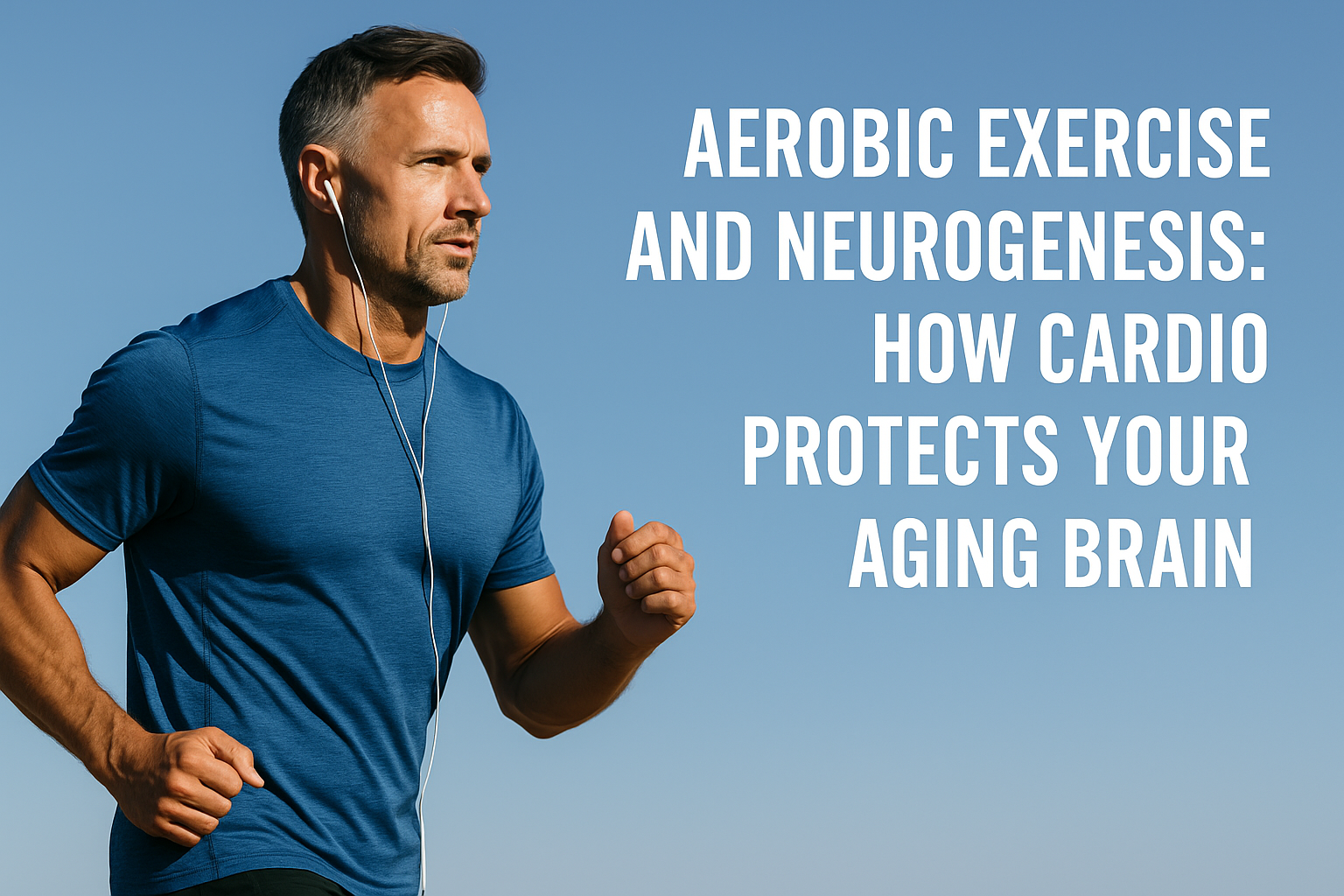Aerobic Exercise and Neurogenesis: How Cardio Protects Your Aging Brain
Aerobic exercise not only benefits physical health but also protects and rejuvenates the brain as we age. Regular cardio increases blood flow, promotes neurogenesis through BDNF, and reduces inflammation, supporting memory and cognitive function. Activities like brisk walking, cycling, and swimming are highly effective. Using tools like heart rate monitors and recovery trackers can optimize these brain-boosting benefits. Consistent aerobic activity is a powerful, natural strategy for maintaining lifelong brain health.

As we age, preserving memory and mental clarity becomes critical. Science now shows that aerobic exercise isn’t just good for your body—it may also protect and rejuvenate your brain.
Let’s explore how cardio stimulates neurogenesis (the growth of new neurons), boosts brain-derived neurotrophic factor (BDNF), and strengthens your brain for the years ahead.
The Brain-Exercise Connection Why it matters: Regular aerobic exercise increases blood flow to the brain, delivering oxygen and nutrients vital for neuron health. It also triggers the release of key growth factors, like BDNF, which support neuroplasticity—the brain’s ability to form new connections.
The science: A 2024 meta-analysis in The Lancet Healthy Longevity found that adults who performed 150 minutes of moderate aerobic activity per week had significantly larger hippocampi (the brain’s memory center) and performed better on cognitive tests.
“Exercise is arguably the single most powerful tool we have to slow brain aging,” says Dr. Peter Attia, host of The Drive podcast.
How Aerobic Exercise Fuels Neurogenesis
- BDNF Boost: Aerobic activity like brisk walking, cycling, or swimming increases BDNF levels, which promote the survival and growth of neurons.
- Enhanced Neuroplasticity: Exercise improves the brain’s adaptability, making it easier to learn new skills and retain memories.
- Reduced Inflammation: Regular cardio lowers systemic inflammation, a key contributor to neurodegenerative diseases.
“If there were a pill that did what exercise does for the brain, we’d all be taking it,” says Dr. Andrew Huberman, neuroscientist and host of The Huberman Lab podcast.
Your Brain-Boosting Cardio Plan
| Activity Type | Frequency | Duration | Why It Helps |
|---|---|---|---|
| Brisk Walking | 5x per week | 30–45 min | Increases blood flow & BDNF |
| Cycling | 3x per week | 45–60 min | Enhances neuroplasticity |
| Swimming | 2x per week | 30 min | Combines cardio with stress relief |
| HIIT (Interval Training) | 1–2x per week | 20–30 min | Stimulates brain-adaptive mechanisms |
Tools to Optimize Your Brain Workouts To maximize the brain benefits of exercise, consider using tools that track and enhance your training. Devices like the Polar H10 Heart Rate Monitor help you stay in the optimal zone for neurogenesis, while wearables such as the Oura Ring allow you to monitor recovery, heart rate variability, and sleep quality—factors crucial for brain repair. Pairing these tools with fitness apps for guided workouts and progress tracking can help you stay consistent and intentional about your brain-boosting cardio routine.
Key Takeaway Aerobic exercise is a natural neuroprotective strategy that supports memory, learning, and overall cognitive health. Start small, stay consistent, and watch your brain thrive.
Ready to take the next step? Explore our curated Brain Health Shop for expert-recommended tools and supplements.
